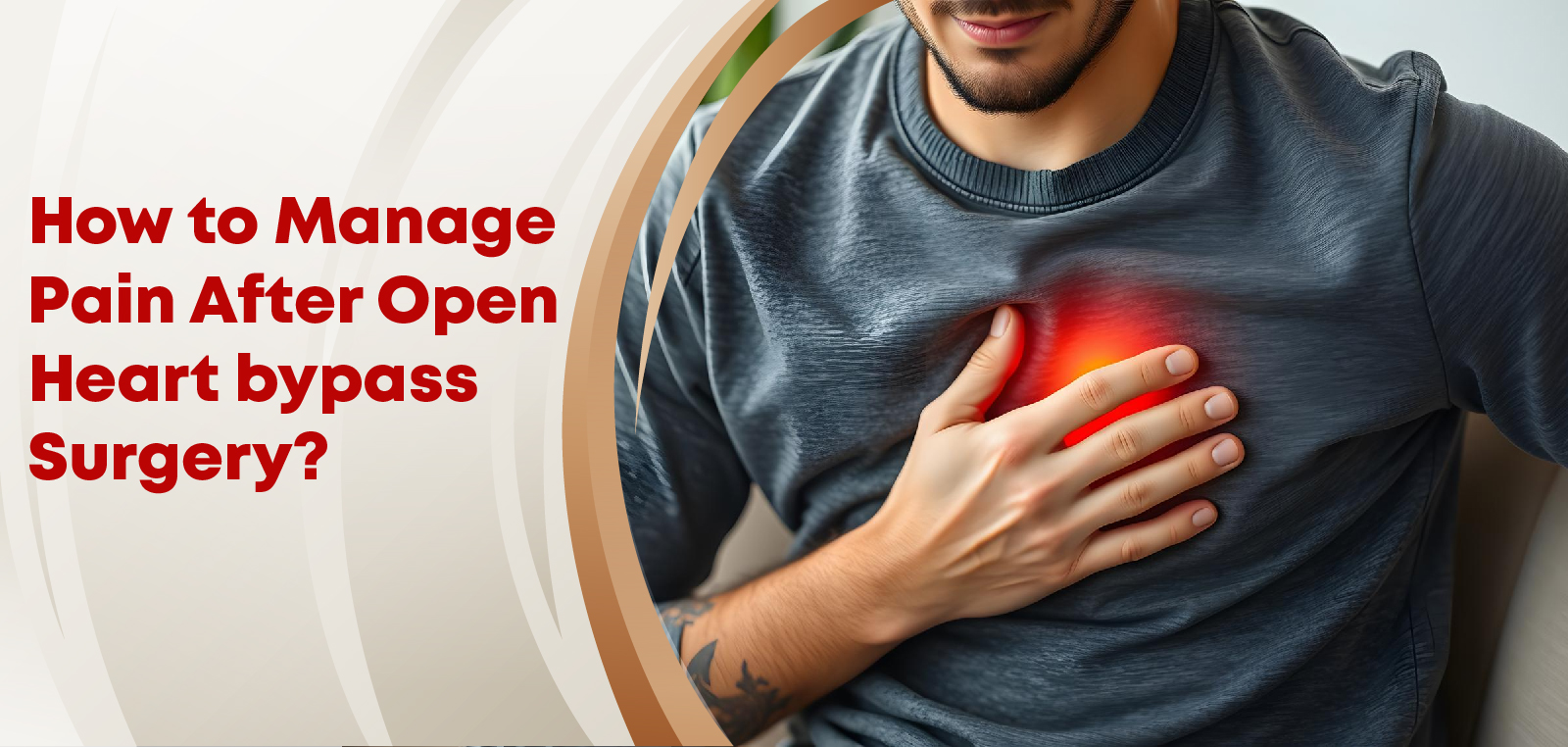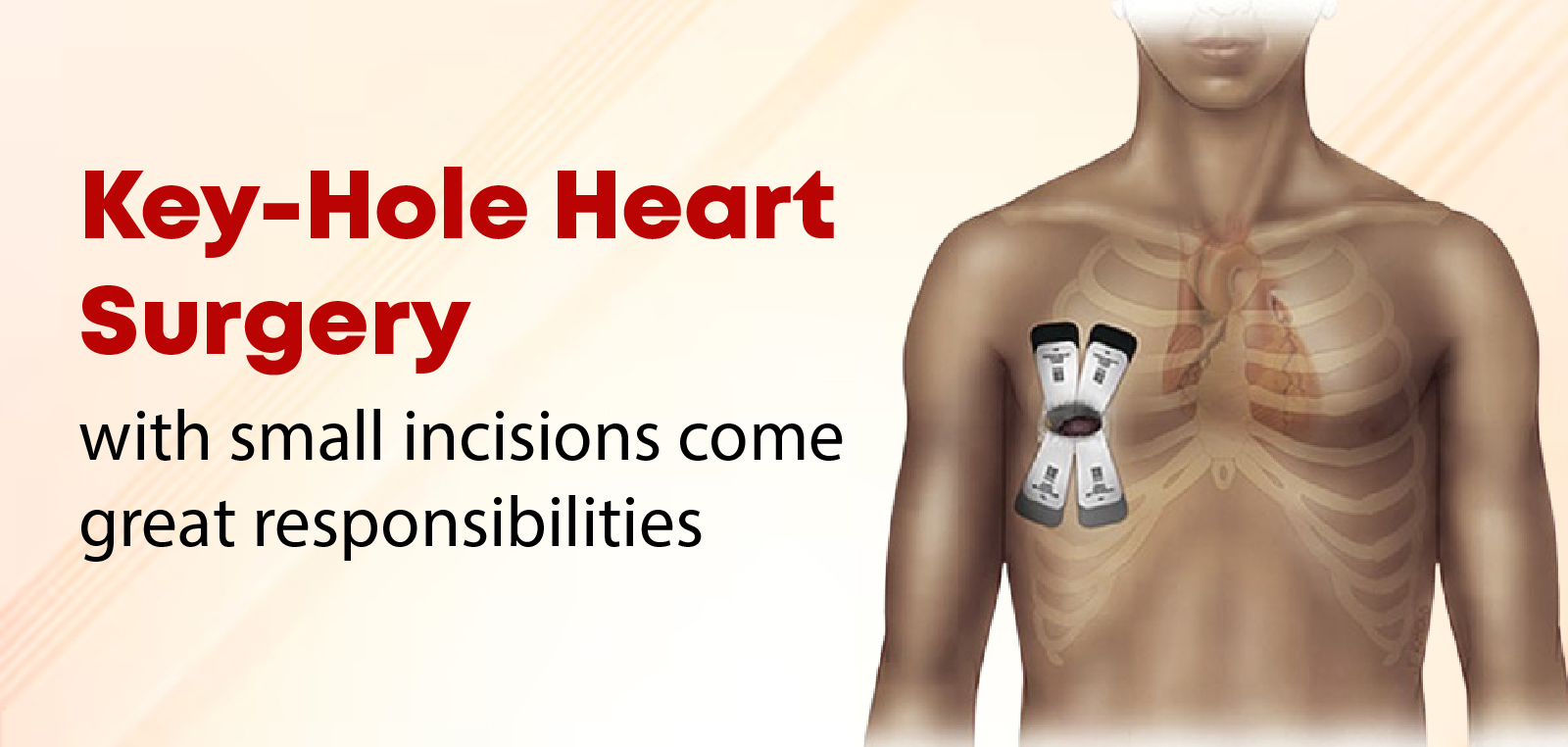- Mon - Sat : 5:30 - 8:30
- Sunday - CLOSED
- +91 99304 53556
- drshridhargpadagatti@gmail.com
- Khar(W), Mumbai
- 001, Himath Ghar
- admindrshridhar
- 0 Comments
How to Manage Pain After Open Heart Bypass Surgery
How to Manage Pain After Open Heart Bypass Surgery “Open-heart bypass surgery is a major procedure performed to relieve severe coronary artery blockages that hinder blood flow to the heart. This process creates an alternative route for blood to bypass obstructed arteries, often blocked by plaque—a combination of calcium, cholesterol, and other substances. When plaque builds up along arterial walls, blood flow to the heart muscle reduces, which can lead to conditions like angina or severe heart attacks. For those with advanced coronary artery disease or ineffective treatments through medication or lifestyle adjustments, bypass surgery may be essential.” Given the significance of this surgery, proper post-operative pain management is critical to ensure a safe and effective recovery. This guide provides insights on managing pain after bypass surgery to facilitate a smoother healing journey. Why Pain Management is Essential After Bypass Surgery Effective pain management post-surgery can significantly boost your recovery rate. A well-planned pain management strategy will not only help you begin physical exercises like walking and breathing routines sooner but can also lower the risk of post-operative complications. By following a pain management routine, you can gain control over your recovery and gradually rebuild strength, ultimately supporting your heart health and overall well-being. Types of Pain You May Experience After Bypass Surgery Pain levels and locations may vary from person to person, but some common post-operative discomforts include: 1) Muscle Pain: Due to the nature of the procedure, you might feel discomfort in your neck, shoulders, or back. 2) Chest Pain: The insertion of chest tubes during surgery may lead to soreness in the chest area. 3) Surgical Site Pain: It’s normal to experience mild to moderate pain around the incision site as it begins to heal. Precautions to Follow After Bypass Surgery To improve recovery after heart bypass surgery, it’s essential to adhere to specific precautionary measures: 1) Take Prescribed Medications: Your doctor will likely prescribe new medications post-surgery. Painkillers, in particular, should be taken as advised to manage discomfort, especially before engaging in physical activity. 2) Avoid Infections at the Incision Site: Keeping the surgical wound clean and dry can prevent infections. Gently cleanse the area with an antimicrobial as per your doctor’s instructions. 3)Resume Physical Activity Gradually: Start with light physical activities under medical supervision. Avoid lifting heavy items or standing for long periods. Always consult with your chest pain doctor if you experience any discomfort. 4) Prioritize a Heart-Healthy Diet: A nutritious diet plays a vital role in recovery. Although appetite may initially decrease, it’s essential to eat well-balanced meals, cutting back on saturated fats, sugars, and processed foods. 5) Care for Your Mental Health: Recovery often involves prolonged bed rest, which may lead to feelings of frustration or mental fatigue. Journaling, meditation, or engaging in light activities that you enjoy can improve your mental well-being 6) Ease Into Activities Like Driving: After about six to eight weeks, you may be ready to return to light activities like driving. However, be sure to consult your doctor before engaging in strenuous tasks, and avoid pushing or pulling heavy objects until fully cleared. 7) Prioritize Rest and Sleep: Proper sleep can be challenging after surgery, but it’s essential. Taking your pain medications around 30 minutes before bedtime may help, as can establishing a regular nighttime routine. Avoid caffeine in the evening and consider listening to calming music to help signal to your body that it’s time for sleep Important Takeaways Recovery from coronary bypass surgery typically takes three to four months, depending on the severity of the procedure. By following a personalized recovery plan and making lifestyle adjustments, you can enhance your recovery experience. Long-term heart health also depends on maintaining a healthy lifestyle, including regular exercise, balanced nutrition, and monitoring for any recurrence of heart disease symptoms. If you or a loved one are considering or recovering from heart bypass surgery, consulting a trusted chest pain doctor can provide the tailored guidance and support necessary for a smooth recovery. Address – 001, Himath Ghar. Plot No. 539-A Opp Khatri Manzil 13th Road Khar (W) Email: drshridhargpadagatti@gmail.com Contact No. +91 99304 53556
- admindrshridhar
- 0 Comments
Keyhole Heart Surgery-With Small Incisions Come Great Responsibilities
Key hole Heart Surgery: With Small Incisions Come Great Responsibilities Keyhole heart surgery, also known as minimally invasive heart surgery, has gained popularity in several surgical specialties, including gynecology, urology, and orthopedics. However, this trend is still slow to catch on in cardiac surgery, especially in countries like the UK. Despite some pioneering centers adopting this advanced surgical technique, others continue to rely on traditional approaches due to various challenges associated with learning and perfecting the method. This blog will explore the history, benefits, and responsibilities involved in keyhole heart surgery, with a focus on the journey to adopting this technique at Active Heart Clinic in Mumbai, under the guidance of Dr. Shridhar G. Padagatti, one of the region’s leading cardio-thoracic and vascular surgeons. A Historical Overview of Keyhole Heart Surgery The journey toward minimally invasive heart surgery began in the late 1990s, when several cardiac surgery centers across Europe and the UK attempted to establish programs for minimally invasive mitral valve surgery. However, the technology available at the time, including early versions of thoracoscopes, was relatively basic, and complications led many centers to abandon these programs. Yet, two groups—one led by Dr. Hugo Vanerman in Aalst, Belgium, and another by Dr. Friedrich Mohr in Leipzig, Germany—persisted with keyhole mitral valve surgery, investing in new technologies and refining their methods. Over the years, they achieved great success and published studies showcasing their results. Today, these advancements have spurred a renewed interest in minimally invasive mitral valve surgery, especially across Europe, with Germany and Belgium seeing over 60% of mitral valve procedures performed using keyhole surgery. However, in the UK, adoption rates remain below 5%, primarily due to concerns regarding patient safety and financial considerations within the healthcare system. Minimally Invasive Heart Surgery in India Dr. Shridhar G. Padagatti and his team at the Active Heart Clinic in Mumbai represent a growing number of Indian cardiac specialists adopting advanced minimally invasive techniques. Since launching their program in 2007 at the Lancashire Cardiac Centre, Dr. Padagatti and his team have gained extensive experience performing keyhole heart surgeries, often using advanced tools like the Endoclamp—a device patented by Edwards Lifesciences. This device isolates the heart during surgery and helps deliver a potassium solution that temporarily stops the heart, allowing for precise surgical corrections without large incisions. The team’s commitment to continuous improvement has positioned the Active Heart Clinic as a leading center for minimally invasive mitral and tricuspid valve surgeries, as well as procedures for atrial septal defects and atrial fibrillation. Dr. Padagatti’s extensive background, including his specialized training in cardiovascular and thoracic surgery, allows him to bring a level of expertise that ensures patient safety and successful outcomes. Why Keyhole Heart Surgery? Keyhole heart surgery offers several advantages over traditional open-heart surgery, the most notable being smaller incisions. This results in fewer complications, faster recovery times, reduced blood transfusions, and lower infection rates. Here are some of the main benefits: Reduced Blood Transfusions: In traditional open-heart surgeries, the need for blood transfusions can be significant due to the large incisions involved. With keyhole surgery, the risk of blood loss is minimized. At Active Heart Clinic, only about 5% of patients who undergo keyhole mitral valve surgery require transfusions, compared to 18% of patients who have traditional sternotomy procedures. Shorter Recovery Time: Patients undergoing keyhole surgery typically experience shorter hospital stays. The reduced trauma to the chest allows for a faster recovery, with most patients returning to their normal activities sooner than those undergoing open-heart surgery. Cosmetic Benefits: For patients concerned about visible scarring, keyhole surgery is an attractive option, as it results in much smaller, less noticeable scars. Reduced Infection Rates: Smaller incisions mean a lower risk of infection, a critical factor for patients with underlying health conditions or those undergoing repeat heart surgeries. The Challenges of Keyhole Surgery Despite its benefits, minimally invasive heart surgery comes with challenges that make it difficult to adopt universally. These include: Complexity of the Procedure: Keyhole heart surgery requires specialized training and the use of advanced, costly instruments like the Endoclamp. The surgeon must rely heavily on video-assisted thoracoscopic technology and Transesophageal Echocardiography (TOE) to guide the surgery accurately. Initial Cost Considerations: The cost of acquiring advanced tools and training for the surgical team is a significant investment. In India, where healthcare costs are often closely scrutinized, convincing stakeholders of the long-term benefits can be challenging. Risk of Complications: While rare, there are some risks associated with keyhole heart surgery. For instance, the redirection of blood flow can cause small particles to travel to the brain, increasing the risk of stroke. However, preoperative scans and thorough patient selection can help mitigate these risks, and Active Heart Clinic has not recorded any strokes in the last 100 mitral valve cases. Overcoming the Challenges: A Focus on Teamwork and Training Dr. Padagatti and his team recognize that the success of keyhole heart surgery depends on effective teamwork and thorough training. Cardiac surgeons often spend over 20 years honing their skills, and introducing new procedures requires additional training for everyone involved. The entire team, including anaesthetists, nursing staff, and technicians, must be well-coordinated for minimally invasive procedures to succeed. At Active Heart Clinic, the team’s efforts are bolstered by the use of advanced imaging technologies, such as high-definition screens and three-dimensional thoracoscopes, which provide greater detail than the naked eye could see. These advancements have made minimally invasive mitral valve surgery safer and more efficient. By training extensively and collaborating with centers that specialize in keyhole surgery, Dr. Padagatti’s team continues to refine their approach, ensuring the best possible outcomes for patients. The Future of Keyhole Heart Surgery in India The future of cardiac surgery, particularly in India, looks promising as more centers begin to recognize the benefits of minimally invasive techniques. However, for this trend to gain widespread adoption, several factors must be addressed: Increased Training Opportunities: Training programs and simulation courses should be made widely available to encourage more surgeons to adopt minimally invasive techniques.


